Beretta M9A3 9mm Pistol 10 Round, Green – J92M9A31 For Sale
$892.97
Is the Beretta M9A3 discontinued?
Yes, the Beretta M9A3 has been discontinued.
Why did the army reject the M9A3?
The U.S. Army rejected the M9A3 primarily due to its decision to pursue a more modern handgun solution through the Modular Handgun System (MHS) competition. The Army was looking for a platform that could offer more modularity, improved ergonomics, and accommodate new technologies and calibers. The M9A3 was an updated version of the M9, which had been in service since the 1980s, but the changes were not sufficient to meet the Army’s evolving requirements. Instead, the Army selected the Sig Sauer P320, designated as the M17/M18, which offered greater flexibility and advanced features that aligned better with contemporary military needs.
What is the difference between M9A3 and M9A4?
The Beretta M9A3 and M9A4 are both versions of the M9 pistol, with improvements and modifications over the original design. Here are the key differences:
1. **Optics-Ready Slide**: One of the major differences is that the M9A4 comes with an optics-ready slide which allows for the easy mounting of red dot sights. The M9A3 does not have this feature as standard.
2. **Grip Texture and Shape**: The M9A4 may have some updates in terms of grip texture and ergonomics which can slightly differ from the M9A3, enhancing user comfort and control.
3. **Sights**: The standard sights on these models can be different. The M9A4 typically features enhanced, high-visibility sights, while the M9A3 might not have the same level of sight enhancements.
4. **Finish**: There might be differences in the finish or coating for corrosion resistance and durability between the two models.
5. **Magazine Capacity**: Although largely similar, there can be slight differences in the magazine options, depending on specific variants and regional configurations.
These differences mark the iteration from the M9A3 to the M9A4, focusing on modernization, adaptability for optics, and user ergonomics.
Is Beretta M9 better than 92FS?
The Beretta M9 and 92FS are very similar firearms, as the M9 is essentially a military version of the 92FS. Both are semi-automatic pistols, chambered in 9x19mm Parabellum, and they share many features, including overall design, capacity, and parts.
Here are some key differences that might influence which one is considered “better” based on your needs:
1. **Markings and Designation**: The M9 typically includes specific military markings and nomenclature, while the 92FS is marketed for civilian use.
2. **Features**: The M9 usually has a two-dot sight system, while the 92FS features a three-dot sight system. This can affect aiming preferences for some users.
3. **Use and Availability**: The M9 is officially issued to the U.S. military, so it has a pedigree of military testing and use. The 92FS is widely available for civilian purchase.
4. **Finish and Coatings**: There can be slight differences in the finishes or coatings applied to the pistols, though this can vary based on the year and specific model.
Choosing which is “better” depends on individual preferences and needs. If you’re looking for a pistol with a military background, the M9 might appeal to you. If features like sight configuration are more important, you might prefer the 92FS. Ultimately, both are reliable and respected firearms in their respective contexts.
What Beretta did the Navy SEALs use?
The Navy SEALs have historically used the Beretta M9 as their standard-issue sidearm. However, they have also been known to use the Beretta M9A1, which features improvements over the original M9 design, such as a Picatinny rail for mounting accessories.
Why is Beretta so expensive?
Beretta firearms are often considered expensive due to several factors:
1. **Quality and Craftsmanship**: Beretta is known for its high-quality materials and meticulous craftsmanship. The company has a long tradition of producing reliable and durable firearms, which contributes to their higher price.
2. **Heritage and History**: Founded in 1526, Beretta is one of the oldest firearm manufacturers in the world. The brand’s rich history and reputation for excellence can add to the perceived value and cost of their products.
3. **Innovation and Technology**: Beretta invests in research and development to integrate the latest technology and innovations into their firearms. This commitment to staying at the forefront of firearm technology can drive up production costs.
4. **Customization and Design**: Many Beretta firearms offer a high degree of customization and come with unique design features, making them more appealing to collectors and enthusiasts and often increasing their price.
5. **Materials and Components**: The use of premium materials and high-quality components in manufacturing can also contribute to the higher cost of Beretta firearms.
6. **Import and Regulation Costs**: For markets outside Italy, import duties, taxes, and regulatory compliance can add to the overall cost of these firearms.
Ultimately, Beretta’s pricing reflects the brand’s commitment to delivering high-quality, reliable, and innovative firearms backed by centuries of expertise.
What year did the Beretta M9A3 come out?
The Beretta M9A3 was introduced in 2015.
Why did the military stop using the Beretta M9?
The military decided to stop using the Beretta M9 primarily due to a need for modernization and to address several limitations of the weapon that surfaced over its years of service. Factors that contributed to the decision include:
1. **Performance Issues:** While the M9 was a reliable pistol, feedback from service members highlighted issues with its size and weight, which could impact maneuverability and ease of use in various combat situations.
2. **Modularity and Customization:** The M9 lacked the modularity and customization options that modern pistols offer, which can be crucial for adapting to different roles and missions.
3. **Advancements in Technology:** Advancements in firearms technology meant that newer models offered better ergonomics, improved accuracy, and more advanced safety features.
4. **Ammunition Considerations:** There was also interest in switching from the 9mm round to a heavier caliber that could offer improved stopping power.
5. **Contractual and Cost Factors:** The decision was part of a broader evaluation within military procurement to find a sidearm that provided improved features at a similar or reduced cost over the weapon’s lifecycle.
As a result, the M9 was replaced by the SIG Sauer P320, designated the M17/M18 in military service, following a rigorous evaluation process under the Modular Handgun System program.
Does the M9A3 have a safety?
Yes, the Beretta M9A3 does have a safety. It features an ambidextrous manual safety lever on the slide, which also acts as a decocker.
How accurate is the Beretta M9A3?
The Beretta M9A3 is known for its accuracy, which can be attributed to its high-quality construction and design. The pistol features a 5.2-inch barrel, which helps improve its precision. Its enhanced grips, trigger system, and sights also contribute to consistent accuracy. Many users report that, with proper training and practice, the M9A3 can achieve tight groupings at typical handgun engagement distances (around 25 meters). However, as with any firearm, individual performance can vary based on the shooter’s skill level and conditions.
Is the M9A4 decocker only?
Yes, the Beretta M9A4 features a decocker-only configuration.
What is the effective range of the Beretta M9A3?
The effective range of the Beretta M9A3 is approximately 50 meters (about 55 yards).
Why did the Army choose SIG over Glock?
The U.S. Army chose SIG Sauer over Glock for its Modular Handgun System (MHS) contract primarily due to several factors. SIG Sauer’s P320, which was selected as the M17 and M18 for the military, offered a modular design that allowed for customizable grips, calibers, and sizes. This modularity was a key requirement for the MHS program, as it provided flexibility for different mission requirements and user preferences.
Additionally, the SIG Sauer proposal was more cost-effective. The overall package SIG offered, including the price, met the Army’s requirements better than Glock’s offering. Factors such as the included features, performance during testing, and overall lifecycle costs played a significant role in the decision-making process.
Ultimately, the combination of modularity, value, and SIG Sauer’s ability to meet the Army’s technical and performance specifications led to their selection over Glock.
Does the Army still issue the M9 bayonet?
Yes, the U.S. Army still issues the M9 bayonet, though it is gradually being replaced by newer models such as the OKC-3S bayonet and other alternatives, depending on the specific requirements and units.
Which conflict made the US Army adopt the M1911 pistol?
The US Army adopted the M1911 pistol following the Philippine-American War. Experiences during this conflict highlighted the inadequacies of the then-standard issue sidearms, leading to the adoption of the M1911 in 1911.
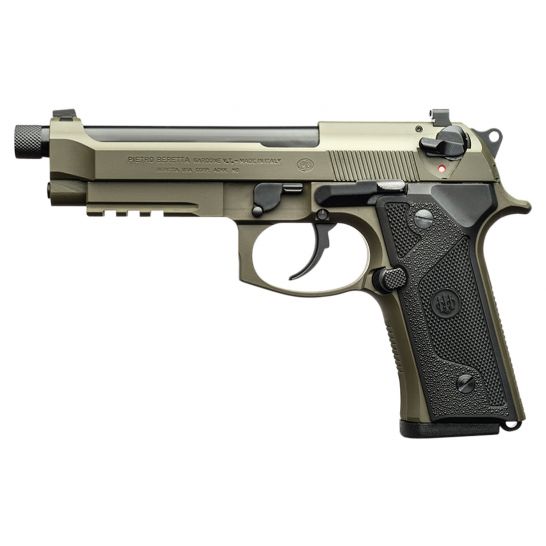
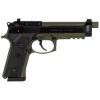
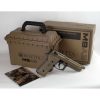
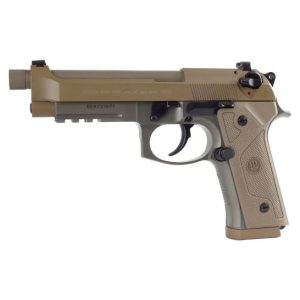
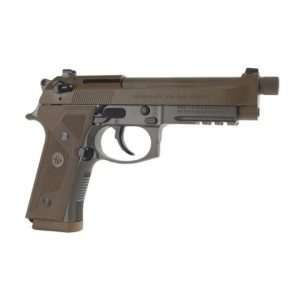
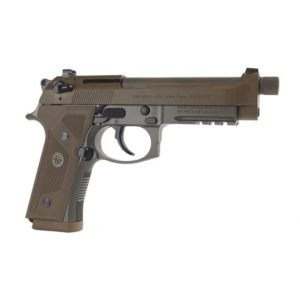
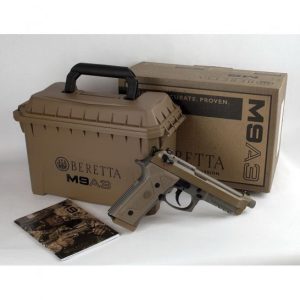
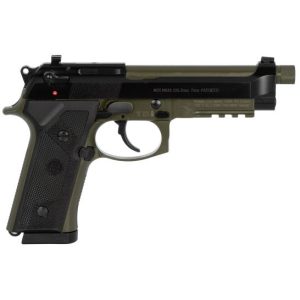
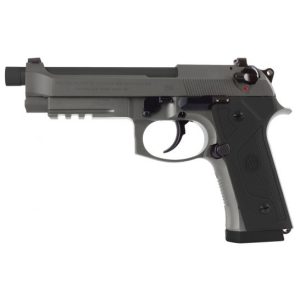
Reviews
There are no reviews yet.